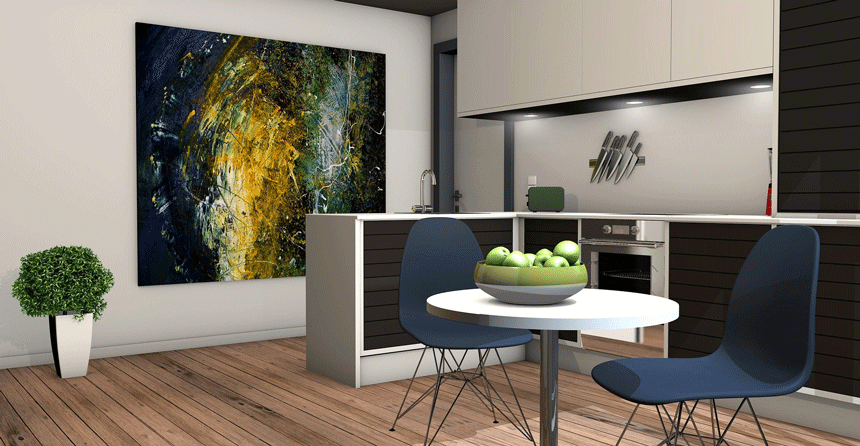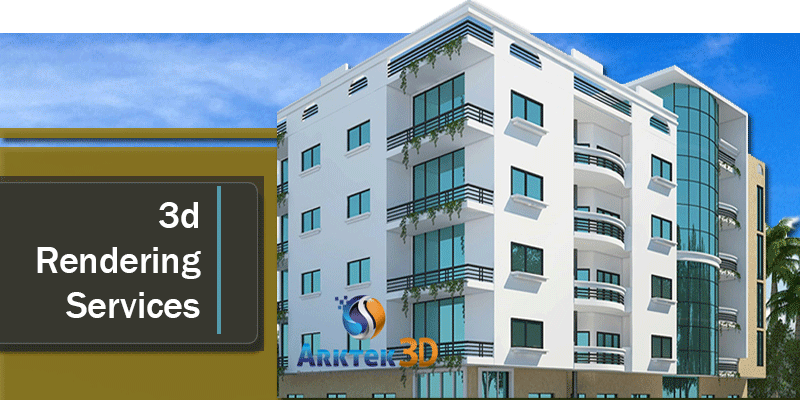Have you come across the term 3D Rendering Services and are confused about it? The process of generating photorealistic images from 3D models or blueprints with the help of advanced image editing software is known as 3D rendering. With the help of editing software and some human ingenuity, we can create an image that depicts every aspect of your project.
From the lighting, layout, and construction materials to how people will interact with the space, 3D rendering includes it all. Learn more about the history of 3D rendering, our process, and where we think rendering will go in the future at Arktek3D today.
History of 3D Rendering

The history of 3D rendering begins with Martin Newell, A. Sutherland, and Ed Catmull. Sutherland is the man behind the creation of Sketchpad, a software that is crucial in the creation of three-dimensional objects. Ed Catmull was the very first person to lay hands on this software and prepare the first 3D image that was not initially drawn by hand. He managed to create an image of his own wrist with the help of Sketchpad.
After Sutherland and Catmull, Maxwell stepped in and made significant strides to alter the algorithms of the basic rendering software. He started with simple objects like a chess piece, an urn, and a donut. Later, at the suggestion of his wife, Maxwell designed a teapot. This teapot is now known as the Utah Teapot, which is considered to be the symbol of computerized 3D rendering. The teapot Maxwell designed has appeared in a number of famous animated films and television shows including Toy Story, Monsters, Inc., and The Simpsons.
Evolution of 3D Rendering

The history of 3D rendering has made a big impact on many industries, from movie animation and jewelry design to architecture and interior design. Today, there are companies that focus on a number of different 3D rendering niches to help others create video games, animate AR/VR apps, release concept cars, and develop floor plans and site plans for new buildings.
The Process of Computerized 3D Renderings
Once the history of 3D rendering developed past these initial stages, companies that offer rendering services developed their own processes and standards to enhance and speed up progress. This is an overview of our process for creating renderings at Arktek3D.
- Getting the Details
The very first step you need to take to get started is to provide our team with the technical details of your project. We need to understand the full scope of work before we can break down and assign the work, provide you a quote, and deliver results. To ensure the accuracy of our renderings, we often ask clients to provide visual examples and inspiration that illustrate their vision. Any photos or sketches can be very helpful in developing your rendering. - Preparing a 3D Model
After we develop a plan to tackle your project and you agree to our quote, we start creating the model. In these 3D renderings, we work on texture, lighting, geometry, and other elements of virtual imagery to ensure that the results look as realistic as possible. Throughout the history of 3D renderings, realism has always been the main goal. - Working in CAD

Computer aided design is what makes creating a high-quality rendering possible. The complexity and photorealism required of your rendering dictate how long the process takes. We can take any 3D architectural blueprint and transform it or start with a design completely from scratch.
- Post Production
When our rendering is complete, we start getting into the details. The more elements you want in your image, the more time it takes to get right. Balancing people, shadows, lighting, and textures is a complicated process that takes an expert eye. - Delivery & Editing
Once the process is complete, we deliver your renderings and wait to hear your feedback. Some clients are satisfied right away, while others make edits and changes.
The Future of 3D Rendering Services
The history of 3D rendering services is fascinating, but it’s the future that really captures our imagination. What are people using renderings for today and where can it take them later on? Let’s take a look!
- Structure Exterior & Landscaping
From entire city planning projects to your private residence, 3D renderings are becoming an industry standard. Real estate investors love to see photorealistic images of proposed projects during presentations. While these images are currently static, we believe that presentations will soon incorporate GIF technology and animation into digital presentations for an even more immersive experience. - Virtual Tours

Whether a building already exists or it’s still in the proposal stages, 3D rendering has evolved to allow video walkthroughs and virtual tours of nearly any space. With 360-degree views of a space, there’s no need for VR goggles to feel like you’re really there. This technology may evolve side by side with VR and AR tech to allow people to experience places and things they may never before have had a chance to explore.
- Real-Time Rendering
During the early stages of the history of 3D rendering, software would take days to create even the most basic of images. Most of the time, artists worked in a basic wireframe version of a project until rendering was complete. While the process has sped up significantly to allow certain things to be completed in hours or minutes, we believe that soon, real-time rendering will make an appearance. Workflow will evolve immensely with the ability to work in real-time with lighting, textures, and other elements that previously took hours to process.
Making History in 3D Rendering
Are you ready to leave your mark on the history of 3D rendering? Use our services for your next residential or commercial project, real estate listing, game development, and so much more! Reach out to us today to get a free quote.

